Complete Guide to Saratoga National Historical Park in New York including things to do, history, hiking trails, nearby lodging, and so much more!
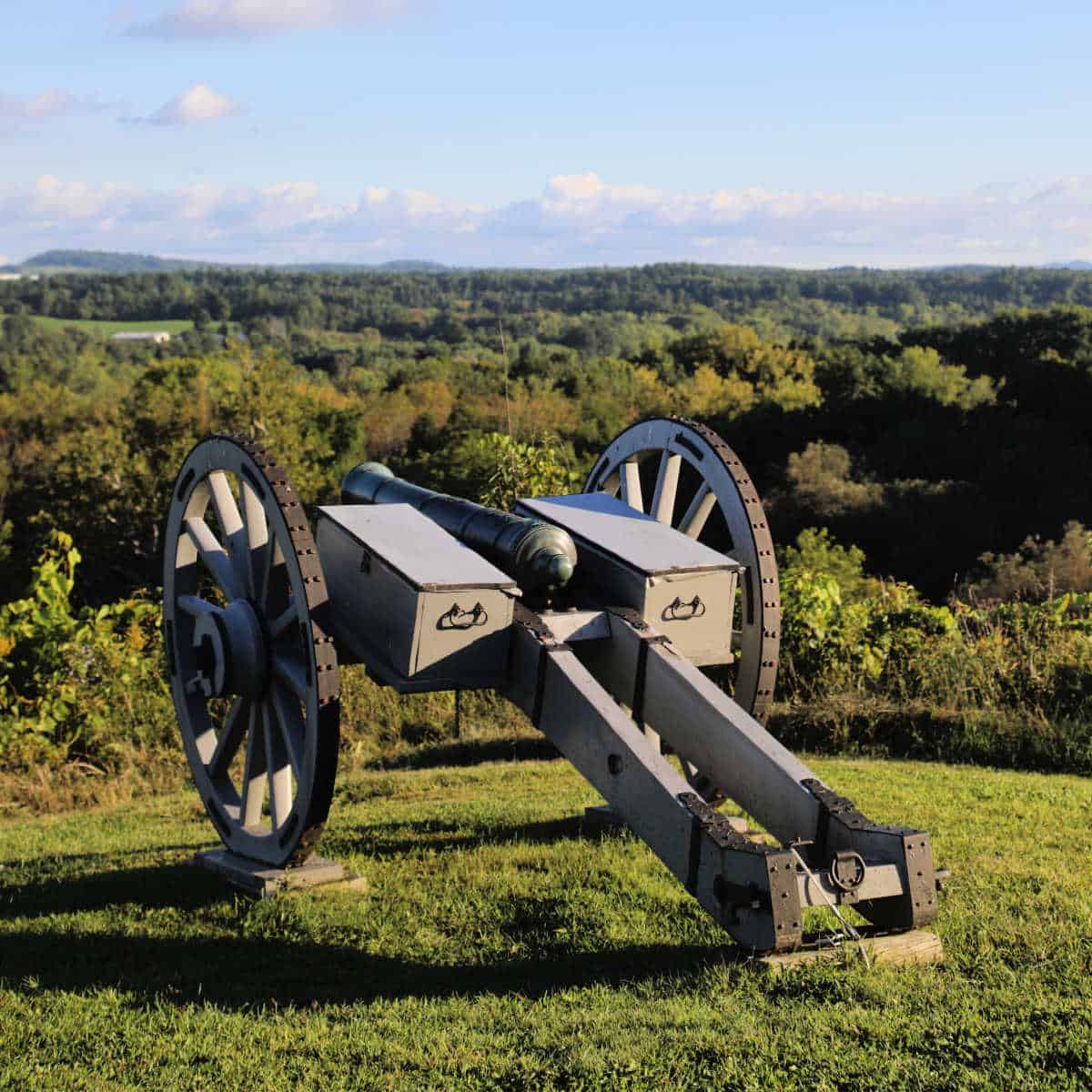
Saratoga National Historical Park
Saratoga National Historical Park is located in Eastern New York about 27 miles from Albany. The park is open year-round offering hiking, scenic driving tour, and interpretation of the Battle of Saratoga.
Saratoga NHP is located in Eastern New York about 27 miles from Albany. The park is open year-round offering hiking, scenic driving tour, and interpretation of the Battle of Saratoga.
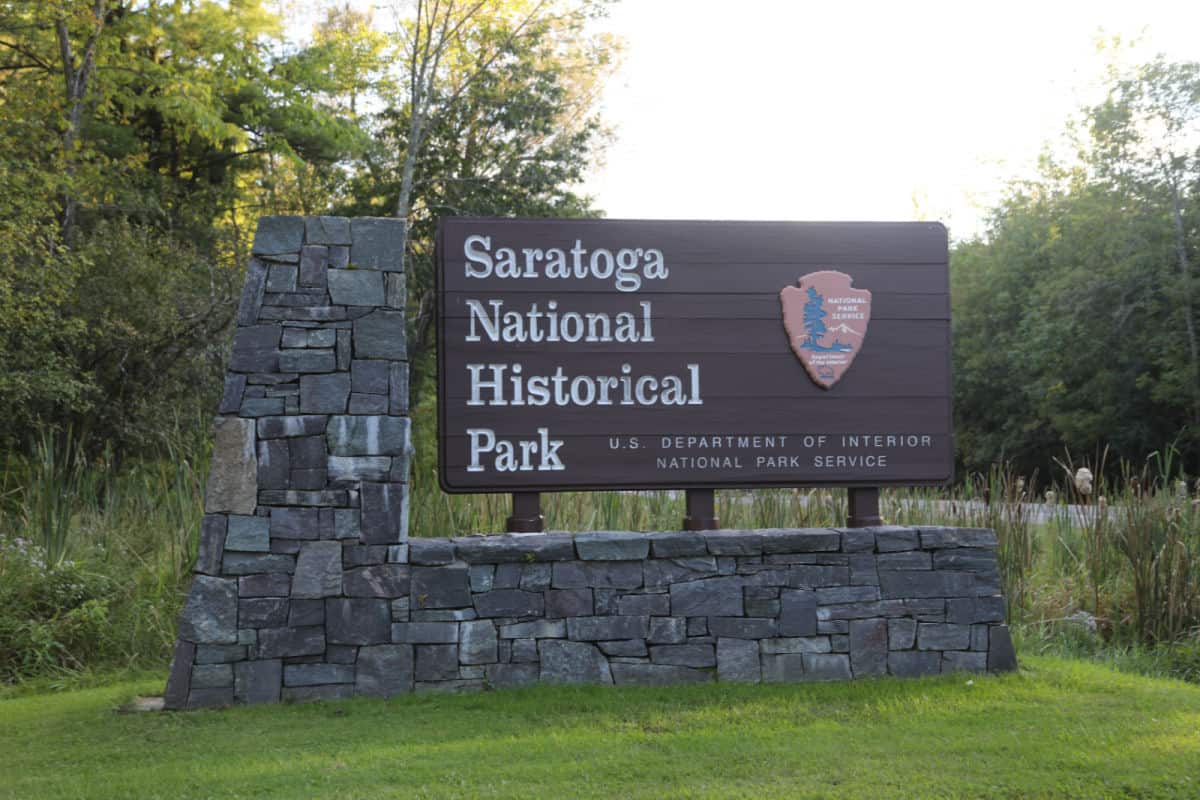
About Saratoga National Historical Park
In 1777 British Troops marched south through New York's Hudson River Valley with plans to join forces with other troops in British occupied New York City.
Their goal was to end the American struggle for independence and isolate New England. Saratoga National Historical Park is made up of four locations that were part of the Battles of Saratoga.
The park has a great driving tour that takes you through the battlefields and designates where American and British troops were stationed.
There are also re-enactments done once a year to commemorate the battles.
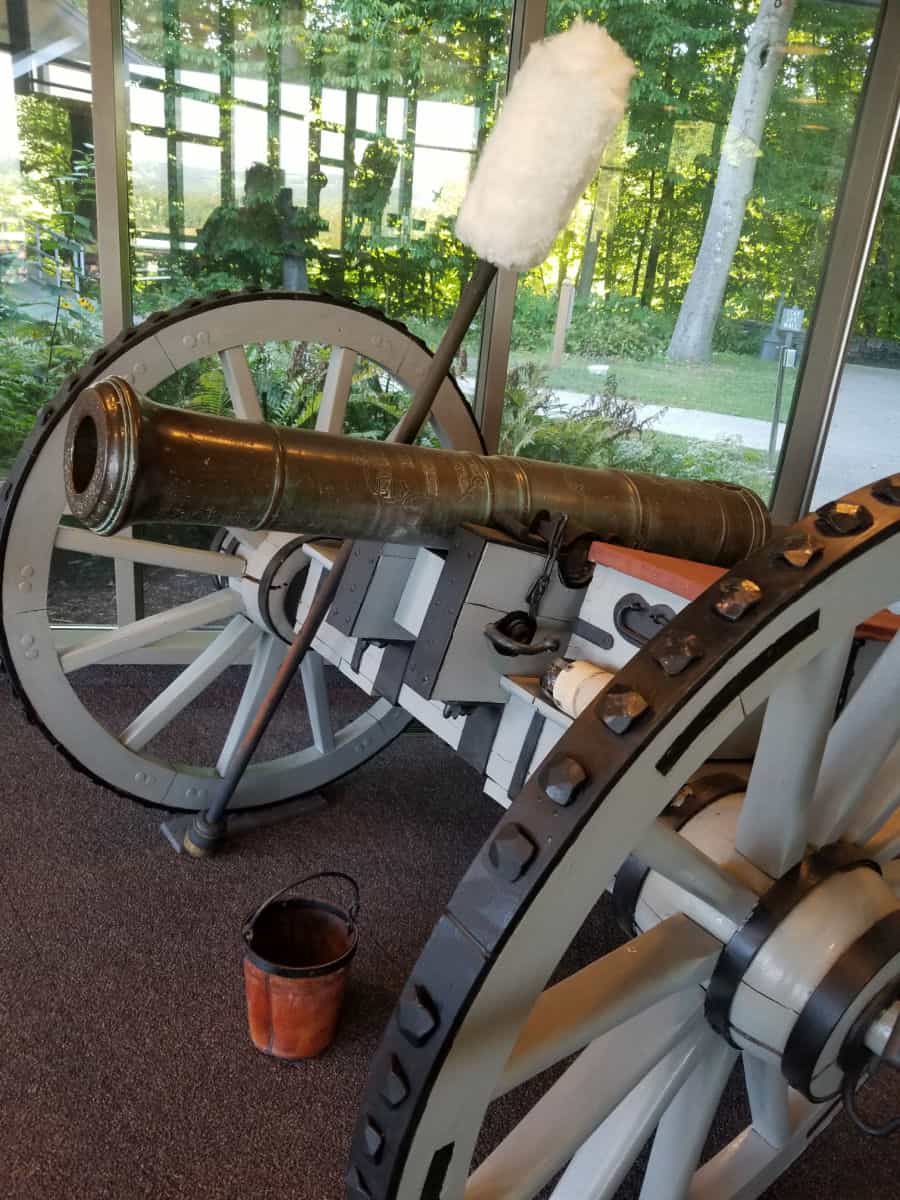
Is Saratoga National Historical Park worth visiting?
Saratoga National Historical Park is worth visiting for its significant role in the Revolutionary War and the Battles of Saratoga. It's an ideal destination for history enthusiasts, curious travelers, and anyone interested in experiencing a unique and educational adventure.
We really enjoyed the auto tour and learning more about this historic battle. The park is really well laid out and does a great job of showcasing their history.
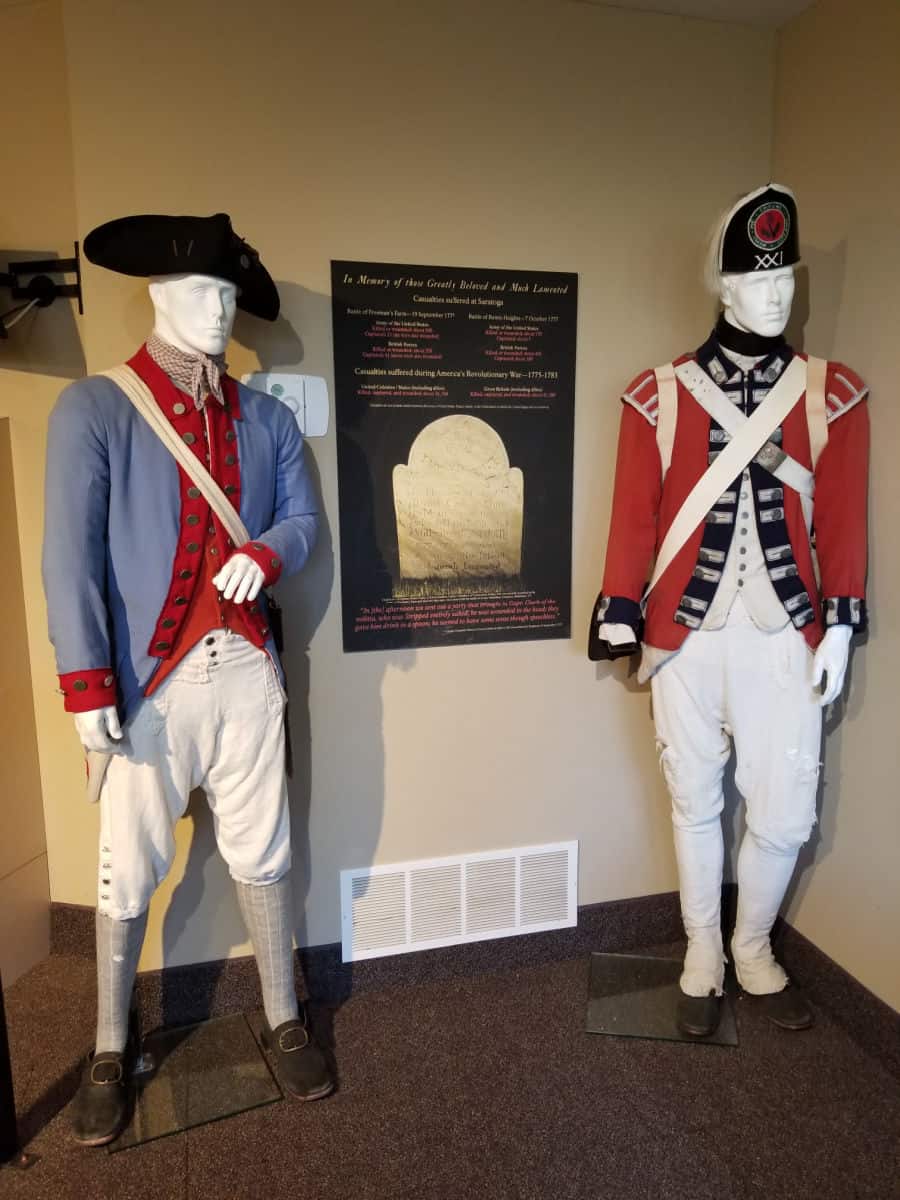
History of Saratoga National Historical Park
The Saratoga National History Park preserves the site of two of the most important battles fought in American history.
The park preserves the area where the Battles of Saratoga were fought during the American Revolutionary War.
The Battles took place on September 19th and October 7th, 1777.
The Battles of Saratoga were a turning point in the American Revolution.
The American victories at Saratoga convinced the French to ally with America.
The French allegiance helped the thirteen American colonies to gain their independence from British rule.
The Battles of Saratoga were two pivotal battles fought between the British Army, headed by General John Burgoyne, and the American forces under General Horatio Gates.
Before the Battles
Before the British and American armies faced each other at Saratoga, the Continental forces had suffered a stunning defeat across the border in Canada.
The Americans had attempted to invade British occupied Canada from 1775 until May 1776.
The campaign failed when the Continental forces were defeated during the Battle of Quebec.
This campaign into Canada and the resulting American loss left the American Army weary and on the retreat. The British hoped that the American's defeat in Canada would be the beginning of the end of the Revolution.
After the defeat at Quebec, the British believed they would be able to crush the Revolution once and for all.
The Redcoats planned to isolate the colonies of New England from the rest of the territories.
They would be able to achieve this by controlling the Hudson River from New York. Under the command of Gen. John Burgoyne, the British army marched towards Albany, New York.
The First Battle of Saratoga
The First Battle of Saratoga, also known as The Battle of Freeman’s Farm began on September 19th.
The Americans had been camped close to Saratoga at Bemis Heights, a heavily wooded area. General Horatio Gates was awaiting the arrival of the British forces, with some 12 000 men.
The two armies clashed in a field on Freeman’s Farm. The British forces suffered comparatively heavy losses in this first battle.
The initial British advance through the open field, towards the American defensive line, was a slaughter.
The heavy British losses were due to an attack led by General Benedict Arnold and cleverly positioned American sharpshooters commanded by Colonel Daniel Morgan in the woods.
That afternoon the British forces were bolstered by the arrival of the main bulk of the army, and a division of German soldiers.
This arrival turned the tide of the battle in favor of the British. The British forces managed to push the Americans back from Freeman’s Farm and into the heavily wooded area of Bemis Heights, where the second battle of Saratoga would take place.
The Second Battle of Saratoga
As night fell on September 19th, the Americans retreated to Bemis Heights.
The Americans had heavily fortified the wooded area, and in the lull between battles, more and more reinforcements arrived. On the other side, General Burgoyne's forces dwindled.
By October 7th, Gen. Burgoyne realized he needed to act. The General had been awaiting reinforcements from New York before making his next move against the Continental Army.
While Burgoyne was waiting, the Americans were planning.
By the time Burgoyne made his move, the Continental Army facing him had grown to be 13 000 strong. Running low on supplies, Burgoyne sent 1 500 troops to attack Gen. Gates's left flank, beginning the Second Battle of Saratoga or the Battle of Bemis Heights.
A British Surrender
As the British attacked the Americans to their left, they were hit by a volley of gunfire by Col. Morgan's men.
It was here that Benedict Arnold led a second attack on the advancing Redcoats and successfully repelled their attack.
Arnold's well-timed charge managed to push the Redcoats back to their camp at Freeman’s Farm.
Burgoyne's hopes of breaking through the American line and reaching Albany were dashed after this last failed attack.
After Bemis Heights, the Continental Army surrounded the remaining British forces and forced the British Army to Surrender on October 17th.
The Continental Army's victories at Saratoga showed that the Americans would be able to defeat the British and gain independence from the Crown.
The victory at Saratoga was proof enough for the French of America's odds that France allied itself with the Americans.
The French involvement in the American Revolutionary War drastically altered the outcome in the American's favor.
French military assistance played a pivotal role in the defeat of the British. The battles fought within the thousands of hectares preserved in the Saratoga National History Park changed the course of American history forever.
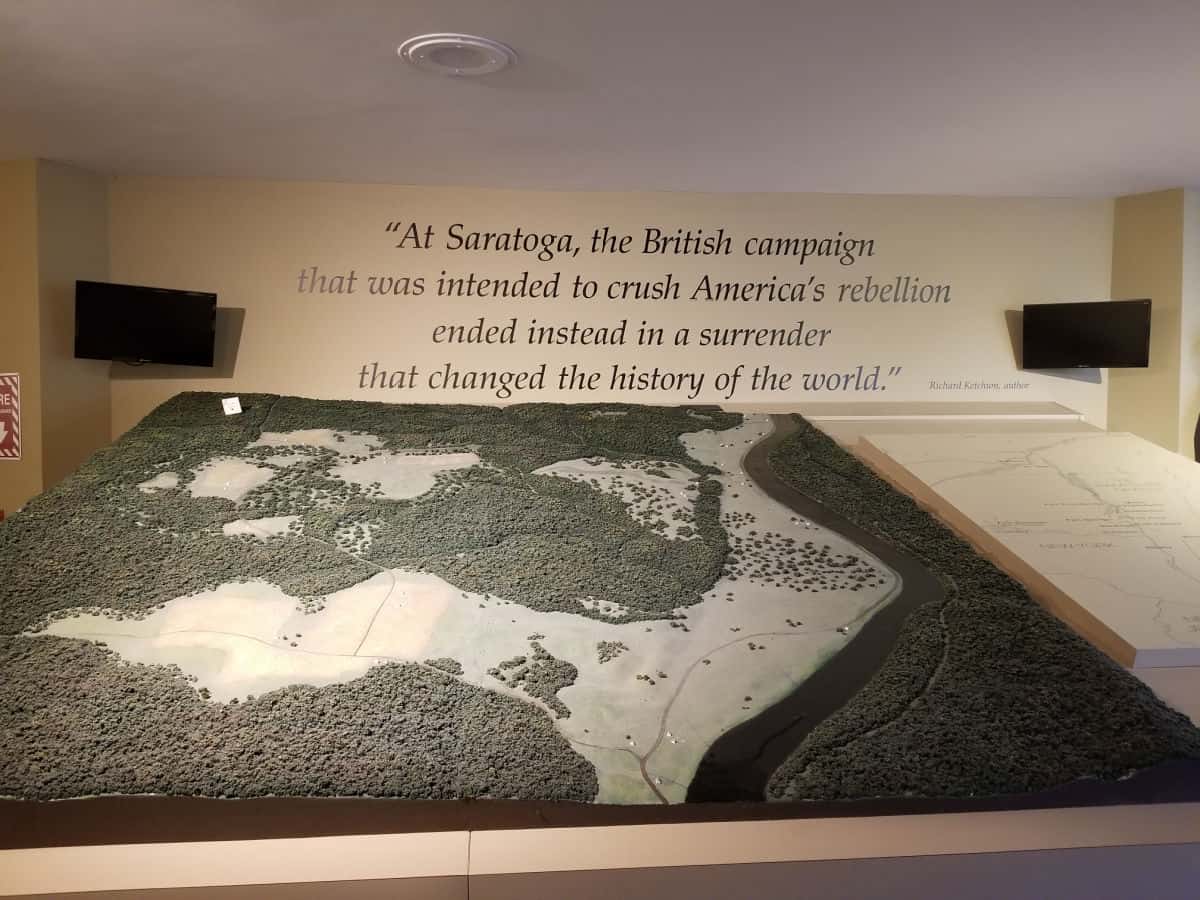
Things to know before your visit to Saratoga National Historical Park
Entrance fee
$0.00 - There is no entrance fee to visit the park.
Learn more about National Park Passes for parks that have an entrance fee.
$80.00 - For the America the Beautiful/National Park Pass. The pass covers entrance fees to all US National Park Sites and over 2,000 Federal Recreation Fee Sites for an entire year and covers everyone in the car for per-vehicle sites and up to 4 adults for per-person sites.

Buy your pass at this link, and REI will donate 10% of pass proceeds to the National Forest Foundation, National Park Foundation, and the U.S. Endowment for Forestry & Communities.
National Park Free Entrance Days -Mark your calendars with the five free entrance days the National Park Service offers annually.
Time Zone
Eastern Time Zone.
Pets
Saratoga NHP is a pet-friendly park. Dogs need to be on a leash at all times.
Cell Service
Cell service should be pretty good throughout the park.
Park Hours
The park's visitor center is open 9 am to 5 pm most of the week but closed Monday, Tuesday, and Wednesday.
The park is open year-round except for some holidays.
Wi-Fi
There is no public Wi-Fi available.
Insect Repellent
Insect repellent is always a great idea when outdoors, especially if you are around any body of water.
We use Permethrin Spray on our clothes before our park trips.
Water Bottle
Make sure to bring your own water bottle and plenty of water with you. Plastic water bottles are not sold in the park.
Parking
There is a nice sized parking area near the visitor center.
Food/Restaurants
There are no restaurants within the park.
Gas
There are no gas stations within the park.
Drones
Drones are not permitted within National Park Sites.
National Park Passport Stamps
National Park Passport stamps can be found in the visitor center.
Saratoga NHP is part of the 2002 Passport Stamp Set
We like to use these circle stickers for park stamps so we don't have to bring our passport book with us on every trip.
The National Park Passport Book program is a great way to document all of the parks you have visitied.
You can get Passport Stickers and Annual Stamp Sets to help enhance your Passport Book.
Electric Vehicle Charging
There are 80 charging stations within 10 miles of the park.
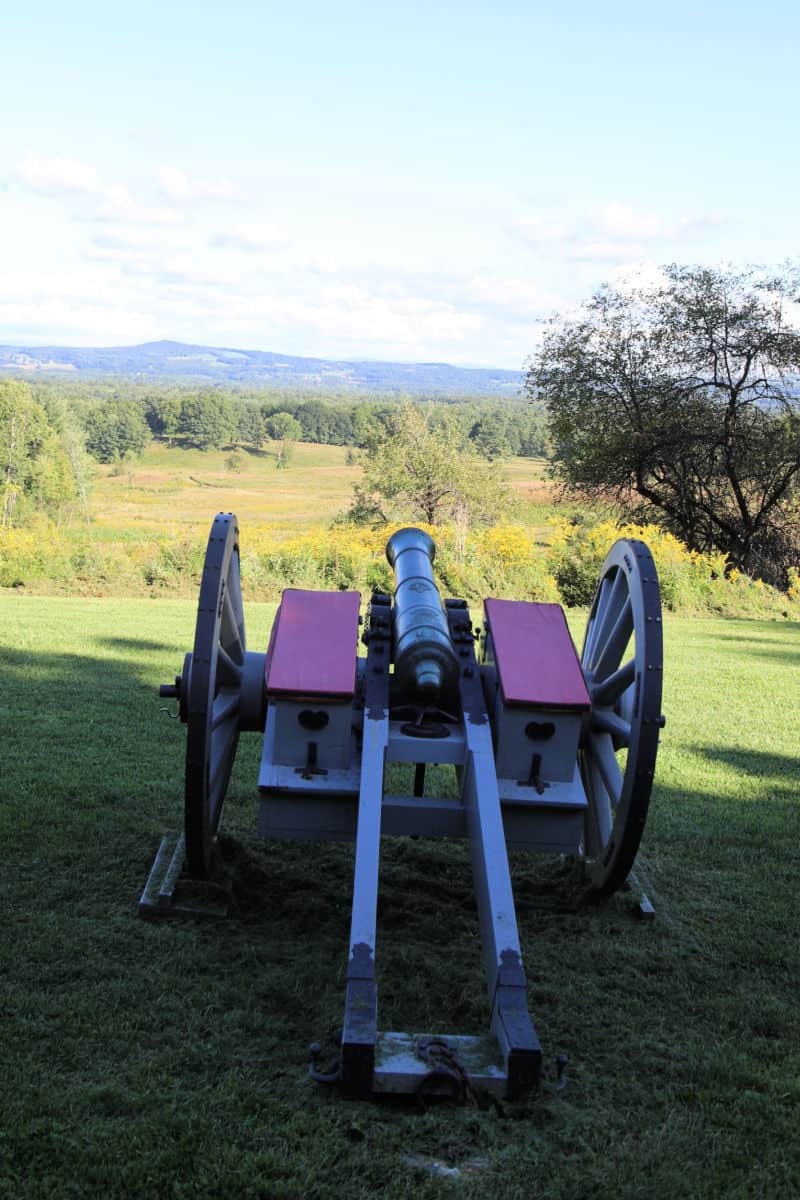
Details about Saratoga National Historical Park
Size - 3,392 acres
Check out how the park compares to other National Parks by Size.
Date Established
1927 - Established as a New York State historic preserve
June 1, 1938 - Became part of the National Park System as a United States National Historical Park.
Visitation
In 2022, Saratoga NHP had 70,742 park visitors.
In 2021, Saratoga NHP had 70,682 park visitors.
In 2020, Saratoga NHP had 73,825 park visitors.
In 2019, Saratoga NHP had 145,118 park visitors.
Learn more about the most visited and least visited National Parks in the US
National Park Address
648 Route 32
Stillwater, NY 12170
National Park Map
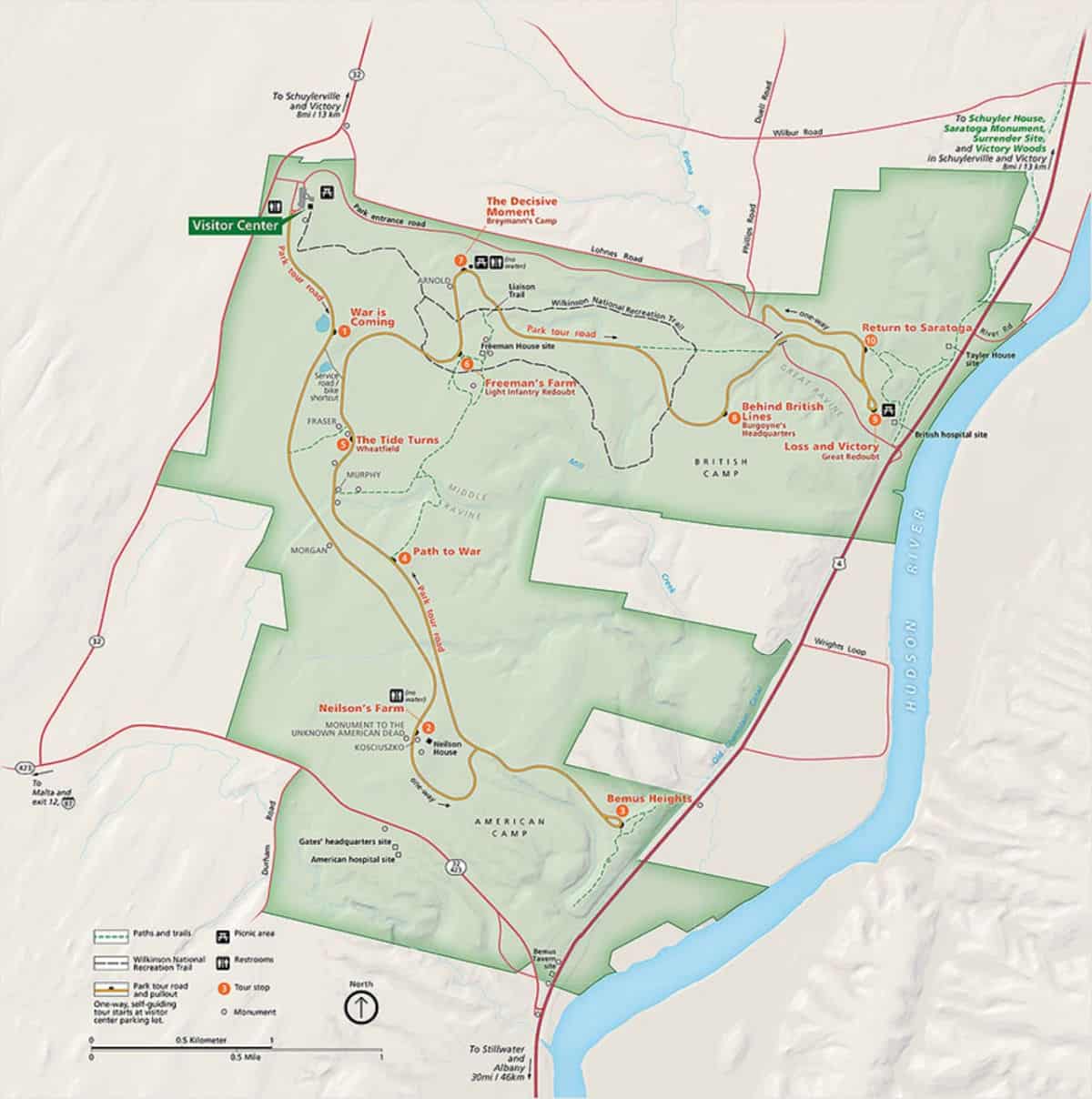
Where is Saratoga National Historical Park?
Saratoga National Historical Park is located between U.S. Route 4 and N.Y. Route 32, about 4 miles north of the Village of Stillwater, N.Y.
Estimated distance from major cities nearby
- Boston, MA - 201 miles
- Newark, NJ - 181 miles
- Jersey City, NJ - 184 miles
- New York, NY - 183 miles
- Rochester, NY - 226 miles
Estimated Distance from nearby National Park
Acadia National Park - 467 miles
Shenandoah National Park - 464 miles
Cuyahoga Valley National Park - 483 miles
Indiana Dunes National Park - 765 miles
New River Gorge National Park - 676 miles
Where is the National Park Visitor Center?
The park's central Visitor Center is located in the northwest corner of Saratoga Battlefield.
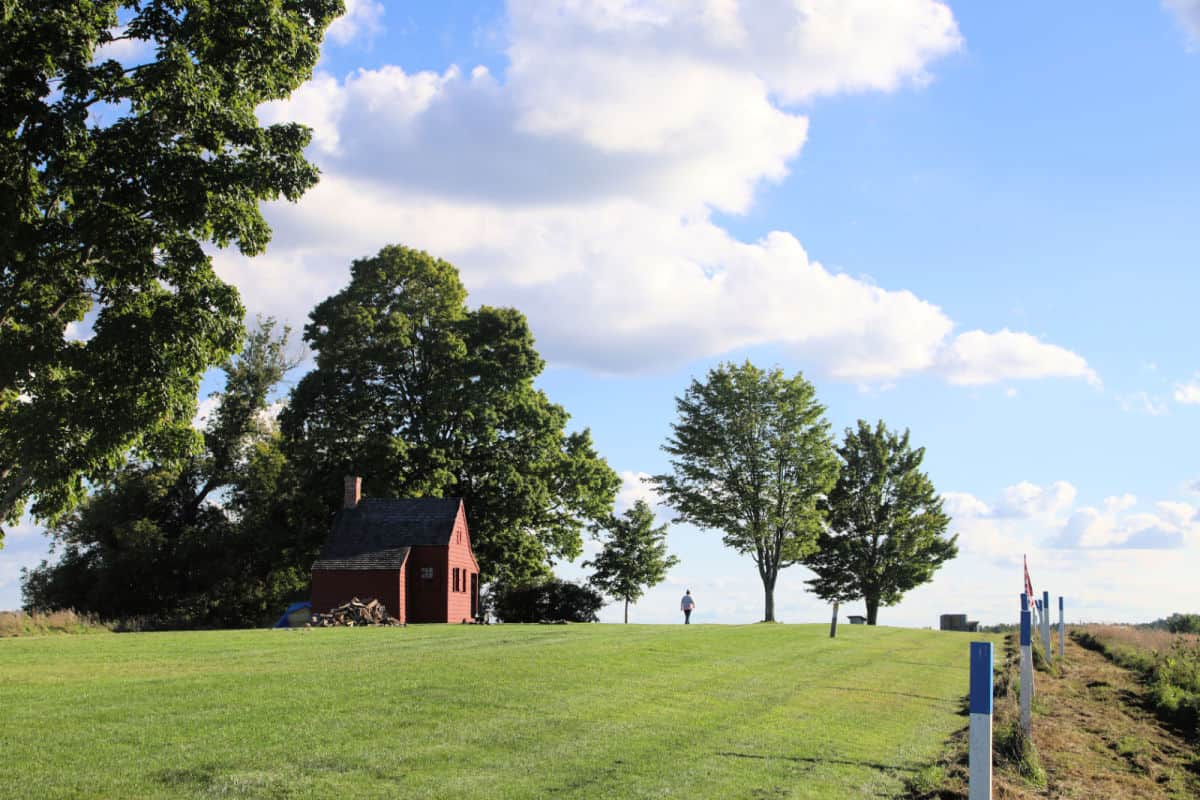
Getting to Saratoga National Historical Park
Closest Airports
- Rutland Southern Vermont Regional Airport (RUT / KRUT)
International Airports
- Bradley International Airport (BDL / KBDL)
- Greater Rochester International Airport (ROC / KROC)
- Syracuse Hancock International Airport (SYR / KSYR)
- Portland International Jetport (PWM / KPWM)
- Newark Liberty International Airport (EWR / KEWR)
- John F. Kennedy International Airport (JFK / KJFK)
Regional Airports
- Worcester Regional Airport (ORH / KORH)
- Adirondack Regional Airport (SLK / KSLK)
Driving Directions
From the NORTH (Glens Falls, Lake George, Montreal)
- Follow I-87 (the "Northway") and get off at Exit 14
- Follow directional signs for Route 29 East. Take Route 29 for about 10 miles into Schuylerville.
- At the intersection with U.S. Route 4 ("T" intersection), turn right to head south.
From the SOUTH (Albany, Kingston, New York City)
- Follow I-87 (the "Northway") and get off at Exit 12.
- Follow directional signs for Route 67 East and Route 9 North. NOTE: there will be a series of traffic circles ahead
- Exit the third traffic circle, following signs for Route 9 North.
- Continue on Route 9 North for about 2 miles.
- Turn right onto Route 9P (Saratoga Lake)
- Continue on Route 9P for about 4.5 miles.
- Turn right onto Route 423
- Continue on Route 423 for about 4 miles
- Turn left onto Route 32 North.
From the EAST (Greenwich, Easton, Cambridge)
- Use Route 29 to Schuylerville.
- At the intersection with U.S. Route 4 ("T" intersection), turn left to head south.
From the WEST (Saratoga Springs, Galway, Broadalbin)
- Use Route 29 to Schuylerville.
- At the intersection with U.S. Route 4 ("T" intersection), turn right to head south.
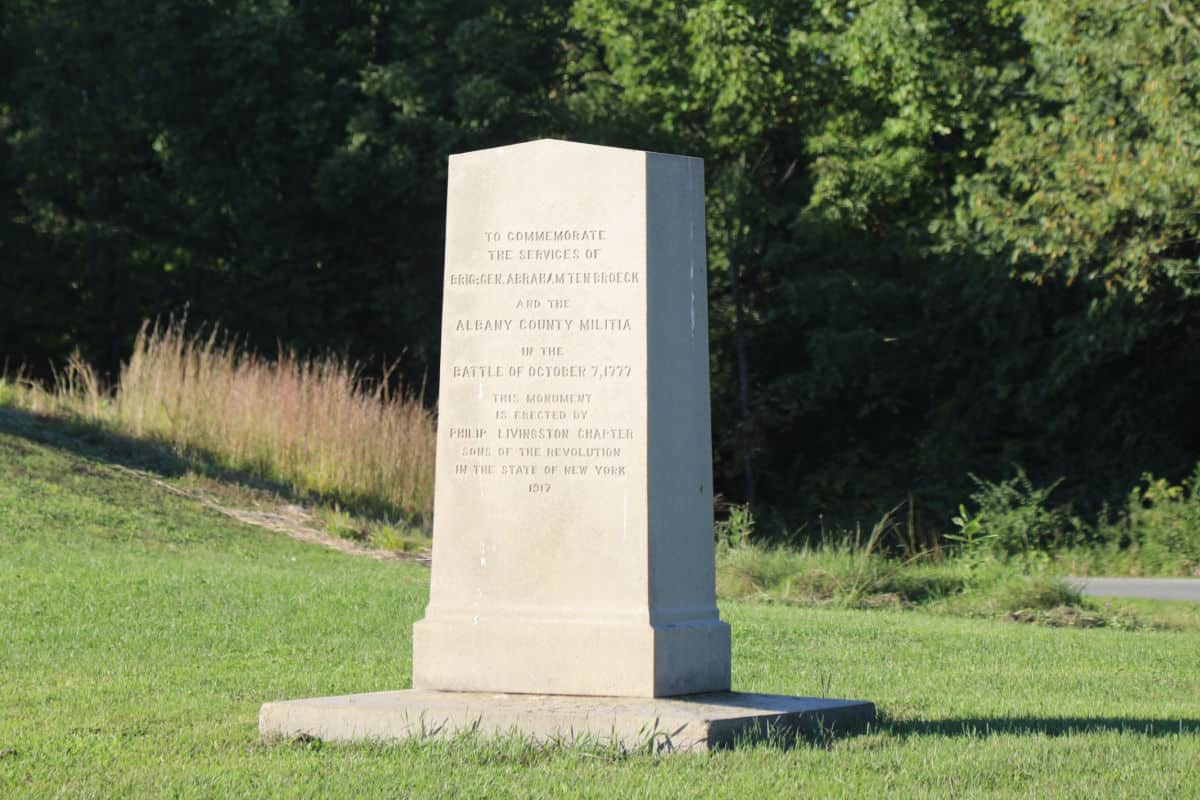
Best time to visit Saratoga National Historical Park
Visiting Saratoga National Historical Park is a great way to spend time outdoors all year round, though the best time of year to visit the park is from May to October.
This is the ideal time to experience ranger-led tours, historical reenactments, and hiking trails, all while enjoying the beautiful weather.
However, winter enthusiasts can enjoy snowshoeing and cross-country skiing in the park during the colder months. Regardless of when you visit, Saratoga National Historical Park offers a unique and exciting adventure for all visitors.
Weather and Seasons
The warmest weather is from May 25th to September 17th, with an average daily high temperature above 72 degrees.
The coldest weather is from December 2nd to March 10th, with an average daily high temperature below 41 degrees.
The snowiest weather is from November 4th to April 14th, with snowfall of at least 1 inch a month. It snows the most in January, with an average of 10.9 inches.
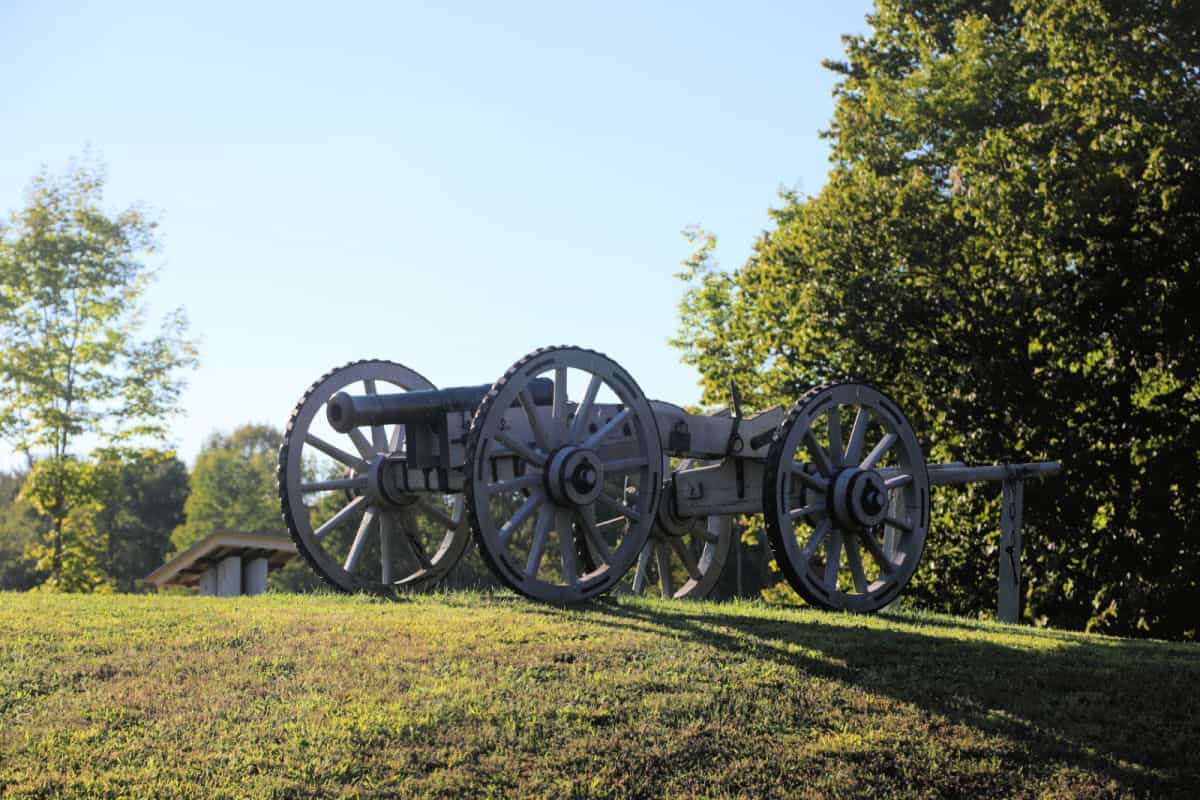
Best Things to do in Saratoga National Historical Park
We suggest planning at minimum a few hours to explore the park. You could easily spend a half a day or longer exploring.
Visitor Center
The Saratoga NHP Visitors Center has great displays sharing information about the battle of Saratoga.
There is a 20-minute orientation film talking about this crucial American Victory. There is also a 15-minute fiber-optic light map, timeline display, and artifact display.
There is also a small bookstore and gift shop near the main entrance.
Junior Ranger Program
The Saratoga NHP Junior Ranger Program can be picked up at the visitor center. The junior ranger program is a great way to learn more about the park!
9 Mile Auto Tour
The 9-mile auto tour takes you through the historical park. It is a great way to see where the British and American forces set up camp.
Saratoga Battlefield
Tours of the Battlefield are self-guided. You can walk the Wilkinson Trail or drive the tour route.
Phillip Schuyler House
This home was the northern plantation and country home of General Philip Schuyler before and after the Battles of Saratoga.
The original house was burned by the British during their retreat. The current house was built in 1777 shortly after Burgoyne's surrender.
Famous people that visited Phillip Schuyler's home include George Washington (godfather of daughter Catherine Schuyler), son-in-law Alexander Hamilton (who married daughter Elizabeth Schuyler), Thomas Jefferson, James Madison, and the Marquis de Lafeyette visited this house.
Saratoga Monument
This 155-foot obelisk stands in the location where Burgoyne's camp entrenched during the campaign's final days.
“The battles…of Saratoga and surrender of Lt. General John Burgoyne, on the 17th of October, 1777 formed a niche in the temple of Liberty, which patriotism will one day fill with an appropriate monument.”
- Saratoga Monument Association meeting, 1856
- October 17, 1877: cornerstone laid (It contains a U.S. flag, a 1777 silver coin bearing the image of King George III, an 1877 U.S. silver half dollar, a memorial to the opening of the New York and Canada Railway, Bennington Battle Monument Association documents and 21 newspapers.)
- November 3, 1882: capstone placed
- August 1887: bronze statues completed
- August 1895: financial realities required transfer to New York State (NYS)
- October 1897: initial landscaping completed
- October 17, 1912: official dedication upon the 135th anniversary of Burgoyne’s surrender
- May 1980: Monument transferred to the National Park Service (NPS)
The monument includes Gothic and Egyptian styled elements on a rock-faced granite obelisk.
Inside of the monument there are 188 steps that connect the five levels and a viewing platform at the top (Currently closed to visitors).
Victory Woods
Grounds open daily to pedestrian use during daylight hours
There are 22 acres within Victory Woods that include the final encampment site for the British Army under General Burgoyne prior to the October 17, 1777 surrender to American forces.
There is a half mile trail that includes an accessible path with interpretive signs.
Saratoga Surrender Site
There is an outdoor memorial that marks the site of the British surrender after the battles of Saratoga.
This was the first time in world history that the British Army surrendered to another country.
Located on Route 4, one mile south of Schuylerville.
Events
Frost Faire: a winter festival to fight cabin fever and enjoy a day in the Park.
Junior Ranger Day: a day full of exploring and learning about Saratoga National Historical Park!
Memorial Day: a day honoring fallen service members including those who served at Saratoga in 1777.
Nature Walks a series of walks to lesser-known areas of the park led by Biological Technician, Linda White.
4th of July: a day to welcome new American citizens and celebrate independence with dramatic readings of the Declaration of Independence.
History Walks: a series of walks led by Park Rangers and Volunteers discovering lesser-known stories about the Battles of Saratoga.
July Children's Programs: introducing younger visitors to everyday life for people their age during Colonial times.
Army Trades Weekend: a weekend event full of hands-on discovery and learning how things were made in the 18th century.
Bike Tours: a series of leisurely guided bike rides to discover the untold stories of Saratoga.
August Music Series: a lunchtime series of musical performances reflecting American history and culture.
18th-Century Day: a one-day event at the Schuyler Estate where visitors can enjoy demonstrations of 18th-century trades and activities.
Anniversary Living History Event: a weekend event, around September 19th, where individuals portray soldiers and followers from both armies during the Battles of Saratoga.
Candlelight Tour: a unique, candle-lit evening tour of the Schuyler Estate.
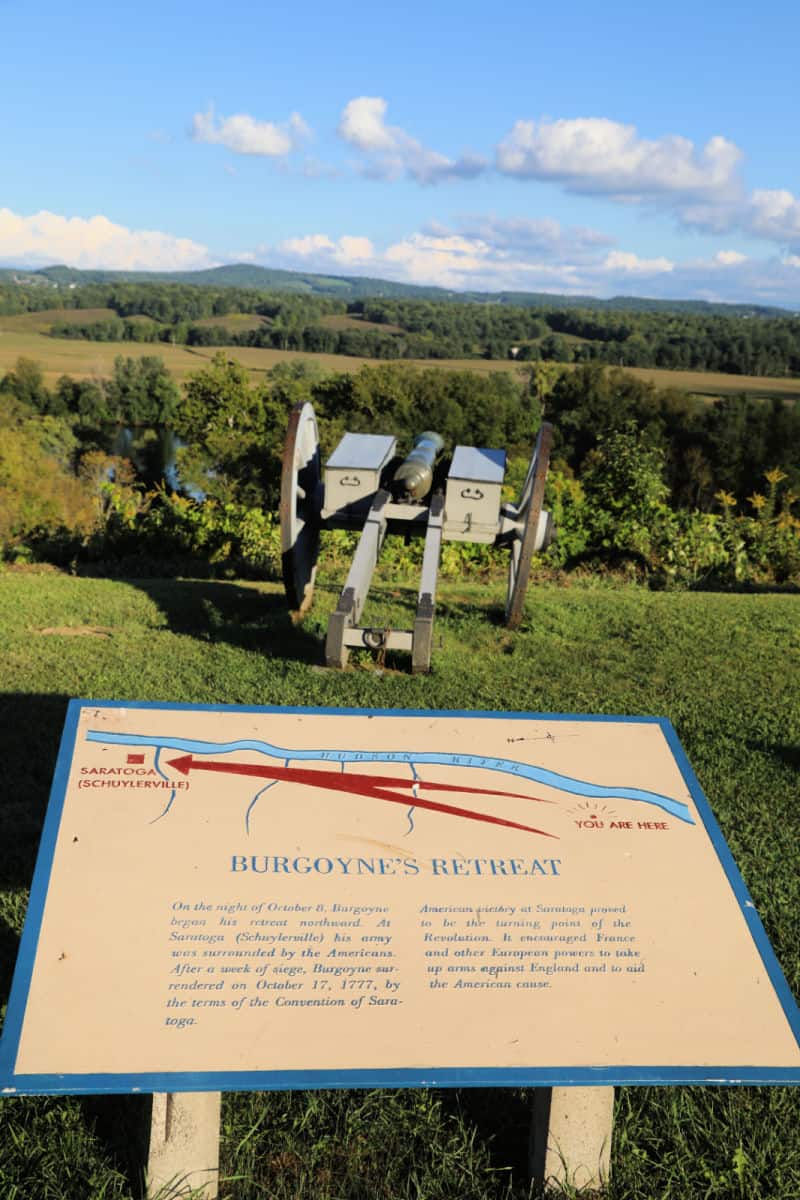
Hiking in Saratoga National Historical Park
Always carry the 10 essentials for outdoor survival when exploring.
Wilkinson Trail
Distance - 4.2 miles
Accessibility - This trail is not accessible. It consists of grass, grave, stone steps, and wooded pathways.
Make sure to look for the 14 lettered trail markers (A-N) that relate to the audio tour that is available.
Liason Trail
Distance - 2 miles
This is the short cut trail that connects within the Wilkinson Trail.
How to beat the crowds in Saratoga National Historical Park?
We did not experience any crowds during our visit to the park. It is an easy park to maneuver around people with the auto tour.
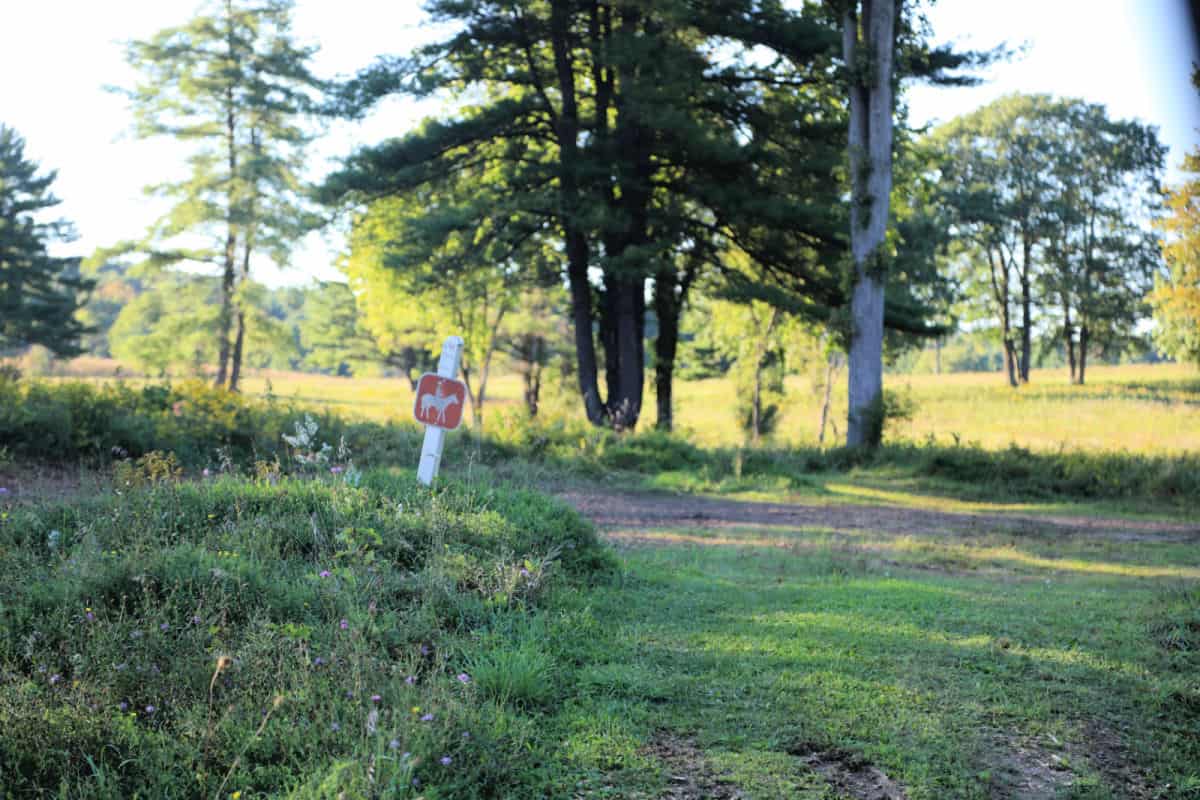
Where to stay when visiting
There are no National Park Lodges within the park.
Nearby Lodging includes:
The Nest on Saratoga Lake - 3.5-star guesthouse by the lake. Located close to Saratoga National Golf Course and Saratoga Spa State Park, The Nest on Saratoga Lake provides dry cleaning/laundry services, a bar, and a restaurant. Stay connected with free in-room Wi-Fi.
Home2 Suites by Hilton Saratoga/Malta - 3-star hotel. At Home2 Suites by Hilton Saratoga/Malta, you can look forward to free breakfast, dry cleaning/laundry services, and a 24-hour gym. Free in-room Wi-Fi and a business center are available to all guests.
Fairfield Inn & Suites by Marriott Saratoga Malta - Property highlights. Take advantage of a free breakfast buffet, a terrace, and dry cleaning/laundry services at Fairfield Inn & Suites by Marriott Saratoga Malta. In addition to a fireplace in the lobby and a gym, guests can connect to free in-room Wi-Fi.
Roosevelt Inn and Suites Saratoga Springs - Located close to Saratoga Spa State Park and Saratoga Performing Arts Center, Roosevelt Inn and Suites Saratoga Springs provides a terrace, a garden, and a fireplace in the lobby. Indulge in a facial, reflexology, and a massage at VAL-KILL Health & Spa, the onsite spa. Free in-room Wi-Fi is available to all guests, along with a gym and a business center.
Click on the map below to see current vacation rentals and lodges near the park.
Camping
There are no National Park Campgrounds within the park.

For a fun adventure check out Escape Campervans. These campervans have built in beds, kitchen area with refrigerators, and more. You can have them fully set up with kitchen supplies, bedding, and other fun extras. They are painted with epic designs you can't miss!
Escape Campervans has offices in Vancouver, Seattle, Portland, San Francisco, Las Vegas, Los Angeles, Phoenix, Salt Lake City, Denver, New York, and Orlando
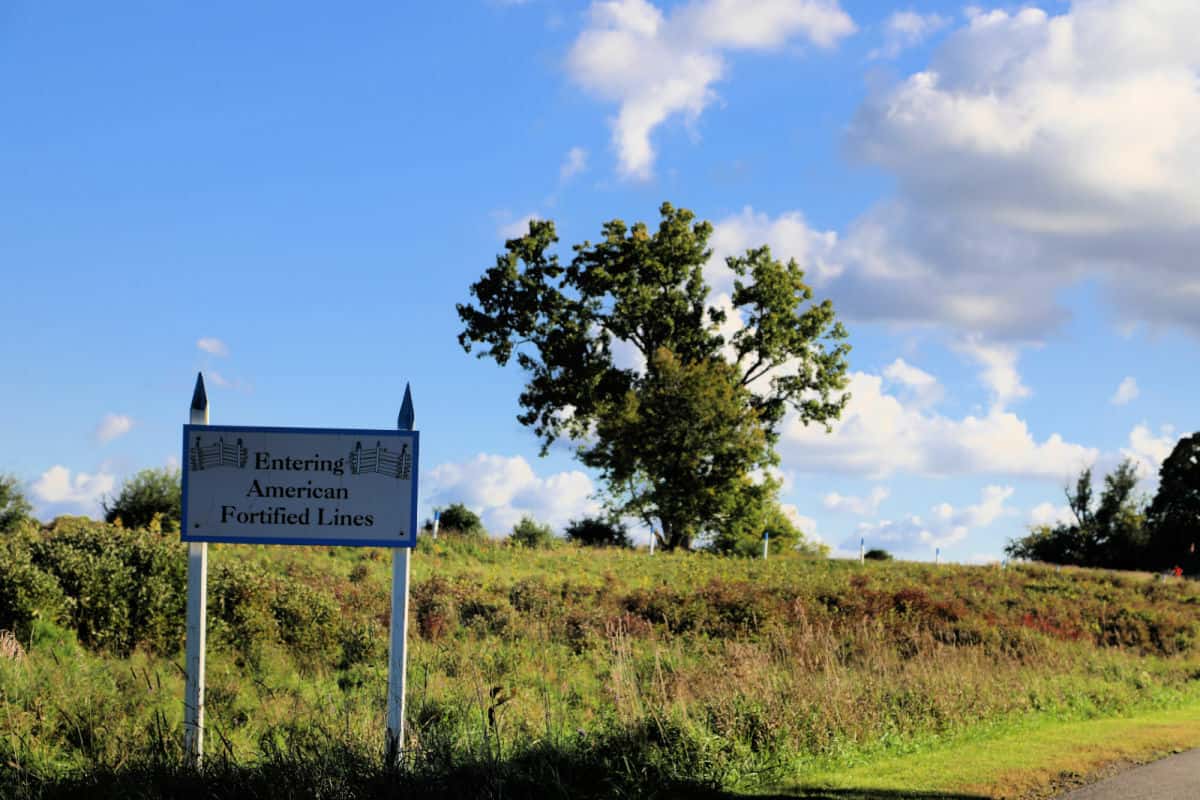
Parks Near Saratoga National Historical Park
Martin Van Buren National Historic Site
Springfield Armory National Historic Site
Vanderbilt Mansion National Historic Site
Home of Franklin D Roosevelt National Historic Site
Eleanor Roosevelt National Historic Site
Three are multiple New York State Parks related to the American Revolution in the area including Steuben Memorial State Historic Site, Oriskany Battlefield State Historic Site, Herkimer Home State Historic Site, Johnson Hall State Historic Site, Schuyler Mansion State Historic Site, Bennington Battlefield State Historic Site, Crown Point State Historic Site, and Champlain Valley National Heritage Partnership.
Check out the other amazing New York National Parks and neighboring National Parks in Massachusetts , Pennsylvania National Parks, National Parks in Vermont, National Parks in New Jersey, and National Parks in Connecticut
Make sure to follow Park Ranger John on Facebook, Instagram, Pinterest, and TikTok





Leave a Reply